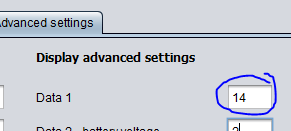I never found this resistance important, so have used the default value always. I think there will be no much difference with a full batterie, but maybe with the last bar a bit.psl2806 said:.....Does the motor stop to soon or too late on an empty battery or does it only have effect on the display where it show how full the battery is?
I still would like to learn how to measure the battery resistance.....
If you want to measure it, you can try to use the data readings of the display,
First measure the voltage when standing still and than again with riding the bike with a lot of motor support.
Try to keep the motorsupport (=measured current) as constant as possible. Calculate the Voltage drop by subtracting the two Voltage values en divide this value by the current.


